The best way to cover strawberries from birds. How to scare away birds
Many pitfalls await the gardener on the way to a bountiful harvest. Proper conditions for keeping plants are, although half the battle, but only part. Sometimes unforeseen circumstances happen that disrupt all plans. First of all, it is worth mentioning pests. And birds especially stand out from this group. Not every gardener encounters them in his garden beds, but if he does, he must act decisively.
If the feathered “robbers” have not spared your garden, then we will help you cope with their invasion quickly and effectively.
If you see an invasion of birds in your garden beds, then it’s time to sound the alarm. Damage to birds is not always immediately visible. Let's list the main reasons why birds, no matter how much you love them, are best kept away from the garden.
Birds peck berries from trees and bushes.If this is a large flock, then, as a rule, they leave nothing for the owners.
Loosening the beds with its beak and paws.As a result of these simple actions, the seeds that you sowed will fall deeper into the soil than necessary or, on the contrary, end up on the surface of the soil. Both will negatively affect the germination of planting material. There is a high probability that such seeds will not germinate at all.
Birds feed in the garden.In this case, it all depends on what kind of birds they are. Only those that feed on seeds should be repelled. Such birds, having feasted on them, will destroy the crops. Other types of birds in moderate quantities are even useful for the garden, since they feed on insect pests.
Method No. 1- addictive to birds
If flocks of birds encroach on trees or shrubs with a berry harvest, then use unnecessary iridescent objects:
tapes from audio or video cassettes
CDs
foil strips
strips of oilcloth, etc.
This method is also suitable for protecting the garden from birds. Carefully hang items on tree or bush branches. The glitter will scare away the birds. If you are hanging ribbons, attach them so that they do not flutter in the wind. This is required so that birds do not get entangled in them.
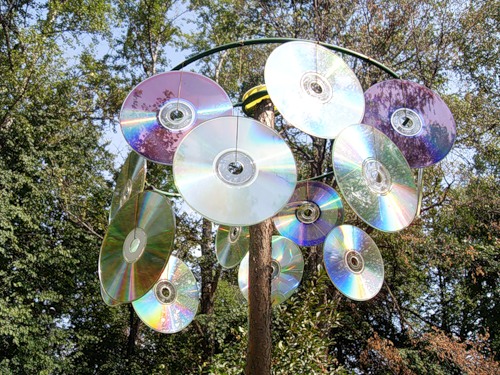
When the birds leave the trees and shrubs alone, all this paraphernalia can be removed.
On a note!
Until the harvest ripens and after it ripens, birds do not harm trees and shrubs. On the contrary, they peck insects and other pests. For this reason, while there is no harvest, birds should not be scared away, but attracted.
Method number 2
If birds damage a greenhouse made of film or agrofiber (they sit on it and tear it with their claws), then ropes or mesh are pulled over it. First of all, this applies to birds that are no longer afraid of sparkles (crows and others).
This method is also used for crops in open ground. Stretch a mesh with large cells over them. It is inconvenient for birds to sit on it and they cannot reach the crops. To make it easier to place the mesh (it can be metal or polymer), secure it to wooden beams. Make the beams in the form of support pillars. Avoid longitudinal slats; birds will perch on them easily. Cover the side parts of the structure with film or agrofibre. Otherwise, feathered pests will easily get under the net and continue to harm the crops.
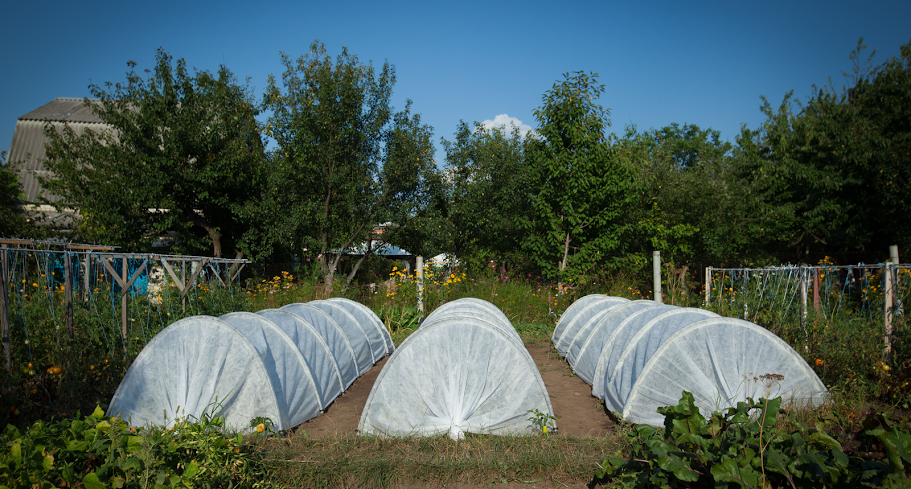
Method number 3
If the birds still get used to sitting on the mesh or getting under it and destroying the seedlings, then use this method. Stretch the wire over the beds (at a short distance). Maintain such a distance that birds cannot penetrate through it and reach the crops.
Method number 4
Netting can also be used to protect shrubs and trees. In this case, it is better to buy a special mesh that is designed specifically for these purposes. You can purchase them in specialized stores or garden centers.
Such nets are pulled tightly around a tree or bush onto a specially driven frame. As a rule, you need to build it yourself; it does not come complete with a mesh. Attach the frame to the frame in such a way that, if necessary, you can lift the mesh and get closer to the tree or bush.

Method number 5
To prevent birds from spoiling your crops, try placing a surface in the free spaces that birds cannot sit on. For this purpose, use a plastic mat with spikes. Place it as closely as possible to the plants. However, in such a way that it does not harm the seedlings.
Choose the minimum thickness of the wire so that it is inconvenient for the birds to sit on it.
Fastening the wire is the same as fastening the mesh in the previous case. As already mentioned, avoid longitudinal beams and other parts - birds will happily roost on them.
Method number 6- addictive to birds
Noises scare birds away. In this case, two options are used: jars (bags) or making a weather vane.
In the first case, string cans from cans onto ropes and attach them to a peg driven into the ground. Place these rattles around the garden.
If you have the time and desire, then make a weather vane for your garden. This will not only help drive birds away from the garden, but will also decorate the beds.
Method number 7- addictive to birds
Make a scarecrow in the garden. The more believable it turns out, the higher the likelihood that the birds will get scared and not touch the crops. Make a scarecrow in human proportions. The scarecrow can be sitting or standing. If you apply a little imagination, the scarecrow will become a decoration of the site.
Tin cans are tied to it for a double effect.

Method number 8
Use modern technologies. Science has made great strides forward in everything. Special inventions have also appeared on the market that will help scare away birds. But, like other methods, they have their pros and cons.
Bioacoustic repeller - makes sounds birds of prey. Prices for it vary depending on control settings and its characteristics. Automated ones are more expensive (with automatic shutdown, etc.). Power can be supplied from a wall outlet or from a battery. This depends on the specific model. If it is powered exclusively from an outlet, then you will have to pull the wires from the house to the tree or beds across the entire site. This, in turn, is inconvenient, and there is a high risk that the wires will get wet in the rain and become shorted. The disadvantage is that the sounds of birds of prey made by the repeller will be listened to not only by the feathered pests, but also by you.
Laser repeller - affects the birds' visual organs, disorients them, and causes fear. In the instructions, manufacturers indicate that this repeller does not affect human vision. However, it is not cheap. It is also possible that this repeller will irritate you with its light (if it is located close to the living space). The laser repeller does not work on all birds. Its use requires additional preparatory measures. It is better to use such a repeller at dawn or dusk. At night and a little after dawn it is not so effective.
Ultrasonic repeller - repels birds with sounds that are only accessible to their hearing. This repeller has no effect on humans at all, and pets do not experience any discomfort. As for the feathered pests, they also remain unharmed. They just don't like the sound of the repeller. For this reason they leave the site.
Gas gun - scares away birds with a loud sound. However, the sound is so loud that it is better to use it in areas located far from residential areas. Although this method is very effective. Again, it does not cause any harm to the birds, but simply scares them.
Method number 9- effective method
This is the most radical and is not suitable for everyone. However, there are birds that are too smart and arrogant to be scared off by ordinary methods. These again include crows.
If crows fly in in a large flock to spoil your crops and have simply turned into... disaster, then you will need a gun. It is enough to shoot one or two birds. Others will remember this and begin to associate your garden with danger. They won't bother you anymore.

Method number 10- effective method
This method has something in common with the previous one, but in this case you don’t have to shoot anyone. As already mentioned, dead brothers are a danger warning signal for birds. For this reason, to repel pests from your area, you can lay out models of dead birds or truly dead birds. The first option is less effective - sooner or later the birds will realize that this is just a dummy. The second option is a win-win (it is even used at airports to drive birds away from the runway).
Method number 11
One of the predators of birds in nature is the dog. If you have a dog, then with its help you can easily get rid of feathered pests. The likelihood of success of this event will increase if you additionally train your pet for this.
If the dog is a pet and does not know commands, then refrain from experiments. Your pet can not only scare away birds, but also ruin your crops. Watch him carefully when he walks near the beds.
Method number 12
Models of radio-controlled airplanes are also used to scare away birds. However, this method is expensive in financial terms - you won’t buy a model airplane to scare away birds. However, if you have it, then the problem of bird invasion is solved.
Method number 13
A visual bird repeller will also help you fight birds in your garden. This category includes a pendant plate with the image of the iris of a bird of prey. This method is used in aviation - a spiral is drawn on the turbines of the aircraft, which, when rotated, emits the eye of a bird of prey.
Place this visual one in your garden. If you have a large area under crops, then install several similar repellers.
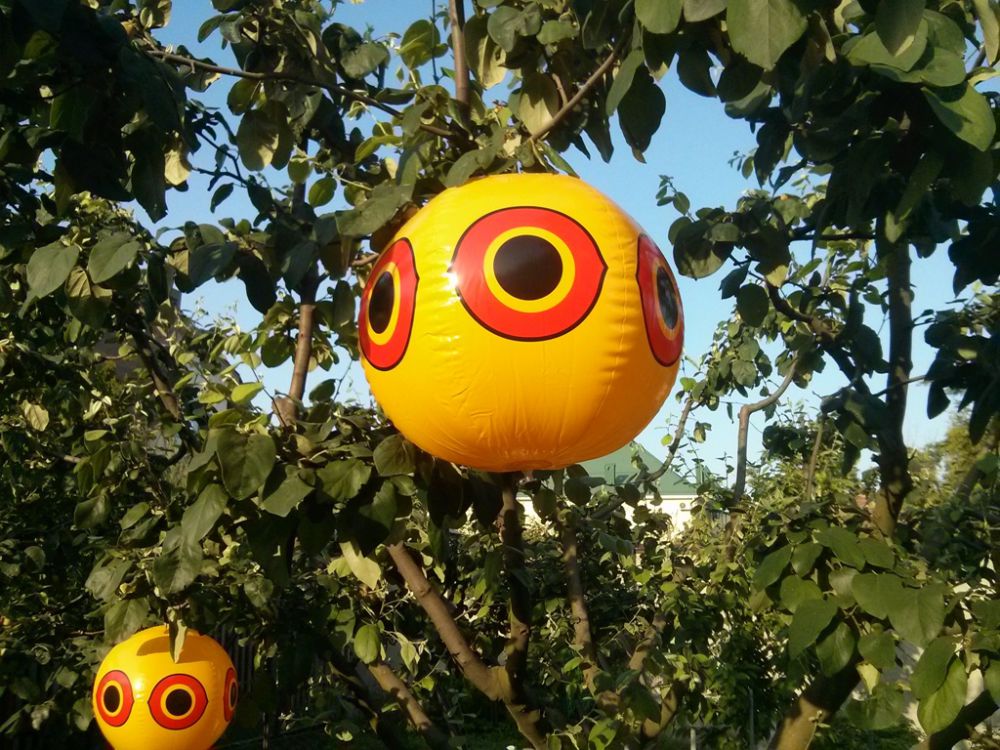
Method number 14- effective method
If the problem of the presence of small birds (like crows, tits, sparrows and others) is acute, then birds of prey (eagles, kites and others) are used to scare them away. Hiring a specialist with a trained bird of prey is not cheap. However, this method is effective.
It is also used at airfields to scare away birds that might collide with aircraft.
Method number 15
Use lighting effects to scare away birds. These could be fireworks or spotlights. The disadvantage of this method is that light repellent is more beneficial at night, but it is necessary to save crops during the day.
In addition, it is better to arrange exposure to light constantly. And you can’t do fireworks often.
Method number 16- effective method
Optical gel is also used to scare away birds. It refers to biological method scaring away. The gel is squeezed out of the tube into saucers (they are included) or onto the required surface. Saucers are placed in in the right places. There is no need to replenish the containers - the gel does not evaporate and does not deteriorate under the influence of precipitation. After a while, the birds will leave your area.
Birds, due to their vision, perceive this gel as fire, sense danger and leave its location.
For those who do not want to harm the birds, this method is also suitable. It is completely safe for birds.
It is important to know!
When choosing a method of controlling birds, be careful; some of them are ineffective. Some repelling methods produce results in the first two to three years, after which the birds get used to them (to the presence of even the most realistic stuffed animal, etc.).
When scaring away birds, do not forget that you will get rid of not only crop pests, but also beneficial birds. From those that fight harmful insects. This, in turn, can lead to growth and a critical increase in the latter, which will negatively affect your crops and crop yields.
For these reasons, choose your bird repellent methods carefully to avoid harming yourself. Give preference to those types of repellents that act precisely on feathered pests only.
Not a single summer cottage or garden is complete without birds - beautiful creatures that constantly chirp, fluttering on tree branches. However, every gardener knows that birds are actually a big problem, since with the arrival of autumn these cute “singers” turn into real predators that damage the crop. They especially like ripe berries and tree fruits, for example, cherries, cherries and other “delicacies”. Therefore, any summer resident simply needs to create certain conditions in order to preserve his work in the form of a whole harvest. Let's see what methods are available to scare away birds.
There are many ways to combat birds. The most popular include:- Imitation of a predator (scarecrow, scream, loud noises);
- Use of special devices (ultrasound, water irrigation, bright flashes);
- Fencing from the site (barbed wire, mesh, etc.);
- Sanding trees (or applying stain);
- Blocking bird nesting areas.
- Old clothes;
- Straw;
- Logs or boards;
- Cotton wool;
- Pillows;
- Hammer, nails.
In addition, you can use other materials at hand, such as tin cans, CDs, mirrors, foil and other shiny objects. Connect the wooden sticks crosswise, secure them in the middle with a nail and wrap the crosspiece with tape or rope. Then put on the “head” of the stuffed animal, having previously prepared it in the form of a pillow with hay. Next, proceed to the torso. For this you will need old clothes: jacket with trousers or dress. Finally, you can decorate the scarecrow with a hat or other elements of your choice.

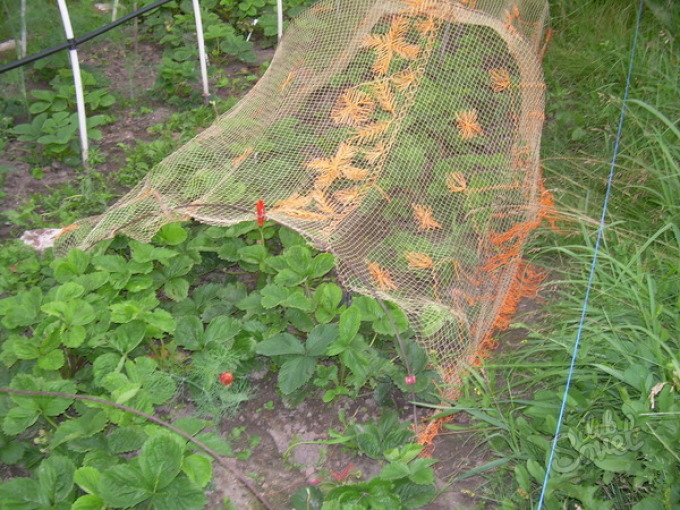

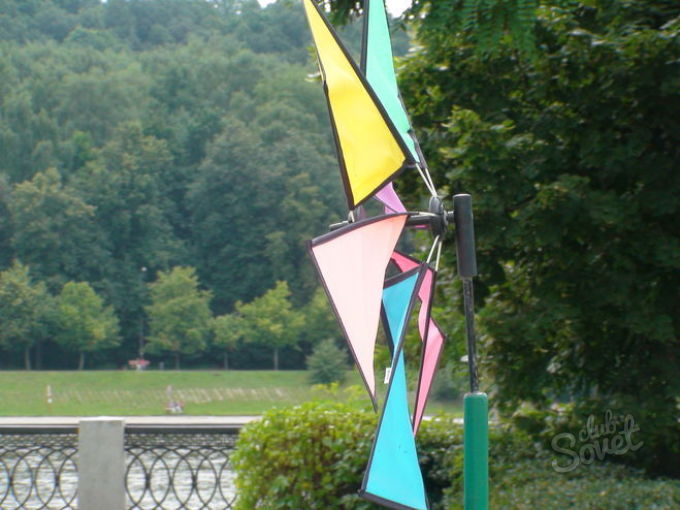

Now, your knowledge has been expanded on the topic of how to deal with clever birds that so mercilessly spoil the harvest. Use one or another method, alternating them or doing it comprehensively. If you cannot decide which method to use, start small - get a pet, birds are very afraid of cats and dogs.
Birds in the country can be both useful and enemies to many crops. On the one hand, they save plants from invasion by pests such as caterpillars, etc. On the other hand, during the ripening period of berries on fruit trees, bushes or strawberries, they turn into kites that simply destroy the crop. It turns out that they do not get enough of insects and begin to be attracted to bright, rich colors ripe berries? No, it’s just that this period coincides with the beginning of hot days and the birds need water, they drink it, as you already understood, from berries. What to do, how to protect the crop from birds such as starlings, sparrows, wagtails, swallows and of course crows?
There are a few effective ways fighting birds for the harvest.
1. Install sippy cups with a branch for the seat, pour regularly clean water and the result will be immediately noticeable - the bite of the crop will be significantly reduced or disappear altogether.
2. Ravens will be well repelled by a flock of magpies (the larger the better) or a kite (hawk), which you must remember to feed with waste so that these same magpies do not decide to look in the direction of the berries.
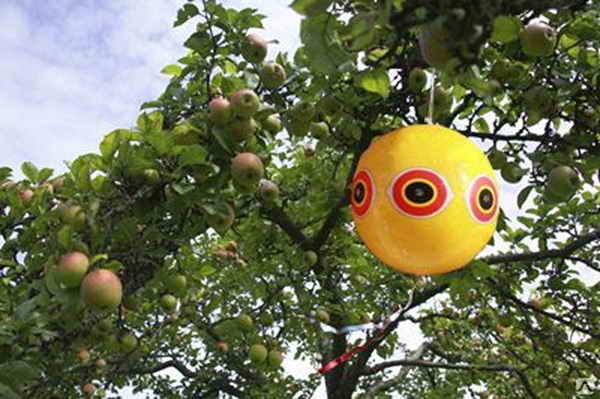

3. Starlings pose a great danger, despite the fact that they are of great benefit in the spring. Starlings can peck at a sea buckthorn or cherry tree in an instant. Therefore, it is very effective for controlling birds by hanging Christmas tree decorations, tinsel, foil or something shiny on a tree. And for you a reminder of winter holiday, and birds do not fly when the berries are ripening.
 4. Ultrasonic repeller, absolutely harmless to humans and an effective device in the fight for the harvest. Sold in specialized stores. Or you can play very loud music for birds, although not everyone will like this option.
4. Ultrasonic repeller, absolutely harmless to humans and an effective device in the fight for the harvest. Sold in specialized stores. Or you can play very loud music for birds, although not everyone will like this option.
5. A net thrown over trees or bushes (mesh no more than 4 cm) will also be an excellent solution to the problem with birds. It is advisable to put it on a specially made frame around the plant, but often this is impossible to do in a summer cottage.
6. We must not forget about the centuries-old bird repeller -. It will become not only a means of protecting the crop, but also a decorative element of your garden. However, it should be taken into account that a scarecrow in the garden is temporary protection, because After 2-3 weeks, the birds get used to it and do not see it as a threat.
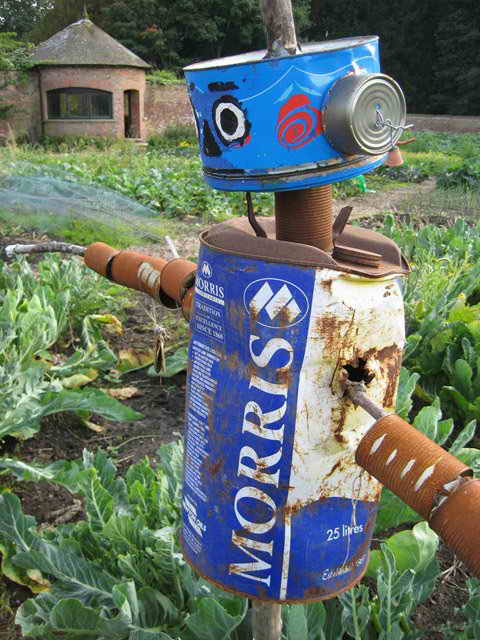
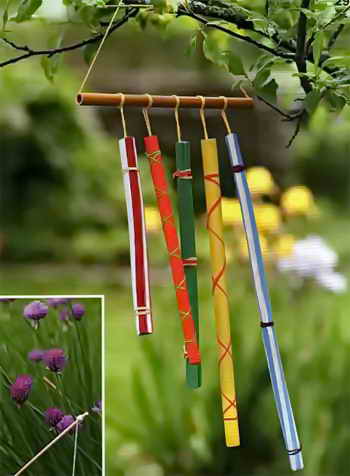
7. Rattle to scare away birds from the area. The material can be beer or drink cans. At the same time, you will get rid of... Special air bells are sold, but their melody in calm weather is unlikely to scare anyone away.
8. A cat is an excellent hunter of birds, rats and mice.
9. Manual method of fighting birds - slingshot.
When protecting your crops from birds, remember that if repellents are in effect throughout the entire season, even if you remove them, you risk losing your crop from an invasion of pests that are not always immediately visible.
How to get rid of aphids, effective means struggle at the site, video
How to fight ants on your property and destroy an anthill, video
Pest control of fruit trees
Protection of plants from pests and diseases.
Instructions for making a nest box
Uninvited feathered guests love to feast on berries in the garden. You can protect the harvest from annoying visitors with noise, shine and a “psychic attack.”
It is known that the most persistent pests - starlings and sparrows - are afraid of saturated of blue color, and any birds are afraid of noise, glare and flashes. Using this, protect your area from raids using proven methods.
Method one: garden scarecrow
A set of the following materials will help you make a reliable watchman with your own hands: cotton wool, pillows, old clothes, straw, thick wooden sticks, tape, nails and a hammer. Connect the sticks crosswise and secure them with nails. Wrap the crosspiece with tape. Make a head out of a pillow, put grandpa's old hat on it and put it on a stick. For the body, take another pillow or straw, a jacket and pants. Your Scarecrow is ready.
The motionless guard itself does not frighten the birds very much, so enhance the effect with rags, bells, rattles, and tin cans fluttering in the wind. Another option for a stuffed animal is a large blue bird, which can be sewn from plain pieces of fabric and decorated with real feathers and foil.
Another original option that will help 100%
It is necessary to make a stuffed animal from two round pieces of foam, glue on huge bright eyes, make wings as in the diagram, and hang it on a high pole above fruit trees and bushes. It will sway in the wind and float, but no one will touch your berries. You can make several of them.
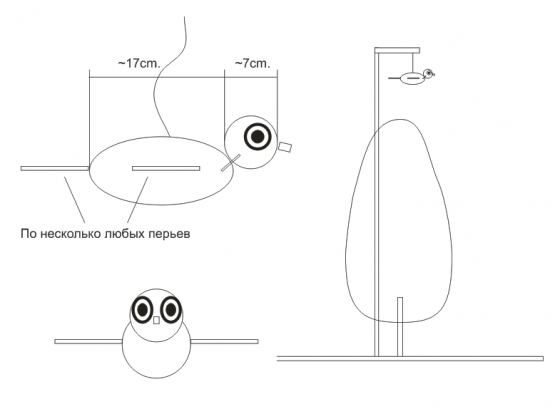
Method two: imitation attack

1 . Birds are afraid not only of dogs and cats, but also of their predatory relatives - falcons, hawks, owls. If your budget allows, purchase one of the modern bio-acoustic repellers that imitate the cry of birds of prey. Devices such as Birdchaser easily cope with their task and scare away winged thieves. Bioacoustic devices can imitate alarming bird calls that warn of danger.
2 . Birds also do not like other loud sounds - for example, those made by gas guns. The frequency of shots is selected using an electronic control panel. If you decide to install such a cannon, then keep the purchase in an area free of vegetation - close to the place where the birds fly. A gas cannon will drive away all birds within a kilometer radius.
3 . Ultrasonic repellers help cope with raids. Their weapon: high-frequency radiation, not dangerous to people, but annoying to birds.
Approximate prices:
-ultrasonic repeller - from RUB 1,850;
- thunder gun - 18,200 rubles;
-bioacoustic repeller - from 30 thousand rubles.
Method three: protective networks
Plastic and viscose nets, which are sold in gardening stores, have been created not so much to scare away as to protect the harvest from voracious birds. Fishing nets play the same role.
To protect the berries, throw a net over a bush or tree. Low trees and bushes can be protected with threads. Tie the end of the thread to a branch and wrap it around the tree so that the thread entangles the entire crown. One coil is enough for a fruiting cherry and two or three for an adult apricot.
Method four: repellent glitter
Bright rays of light and flashes frighten birds just as much as loud sounds. Stretch twine between the trees and hang shiny CDs, tin lids, and foil on it and on tree branches. If it is possible to install mirrors and strobe lights in the garden, use them for the same purpose.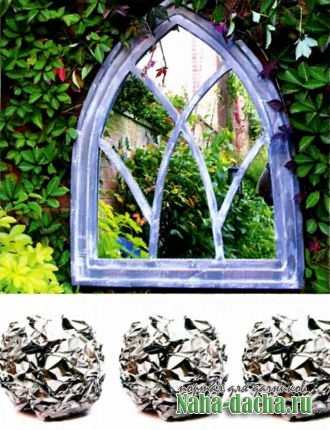
Another remedy is a DIY papier-mâché ball covered with foil. If on each fruit tree hanging such a shiny scarecrow, swaying in the breeze, the birds will not spoil the harvest.
Method five: raid the nests
If birds settle in your country house and make nests under the roof, it will become difficult to fight them using the methods listed here. Your assistant in driving out birds is prevention. Don't let pigeons and sparrows into the secluded places they like so much, carefully check the attic, shed, roof and close any niches and cracks you find.
Are you late? Don't be sad. A cat will help you drive birds out of nests that have already been built. Let a predator into the attic - and the “freeloaders” will leave your house voluntarily.
Anti-landing spikes made of polycarbonate will also help drive birds away from under the roof. Place them on the eaves: it will become difficult for the birds to return to their nests, and they will “register” at a different address.



















